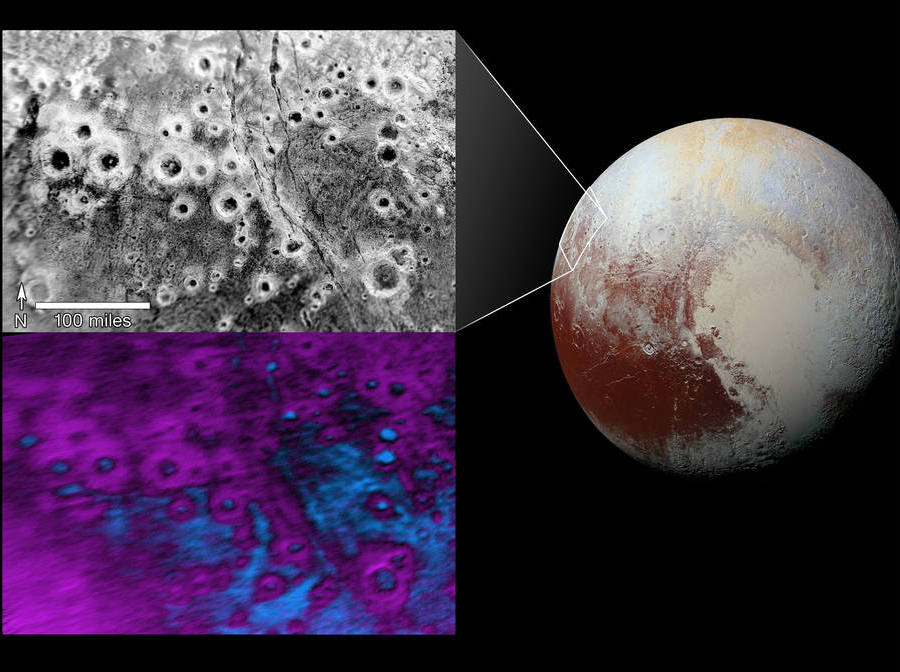NASA’s New Horizons spacecraft was traveling close to the dwarf planet last summer when an image showed what appears to be halo craters, found on Pluto’s surface.
The halo craters appear to be in the west hemisphere of the planet, where several dozens of craters were found measuring up to 50 kilometers in diameter. The term ‘Halo craters’ is given because of the formed bright walls of the craters. Another image obtained by NASA with the New Horizons spacecraft, suggests that the halos are formed by methane ice and water ice.


Scientists are trying to solve the fact of these formations since the methane ice has not been able to settle on the crater rims or walls around the planet. However, the findings have captured scientists’ curiosity and it also motivated them to further study the craters on Pluto.
The distribution of this ice that creates the halo craters remains a mystery to investigators. Still, the findings have allowed scientists to start thinking what could possibly lead for this conditions to occur in Pluto. For now, scientists can only gaze upon the images published by NASA on Saturday and wonder what had to happen to create the amazing halo craters in the dwarf planet.
The New Horizons spacecraft
The New Horizons is a space probe that was launched by NASA in their New Frontiers program. The New Horizons’ mission could be described as an odyssey through space in order to get to the farthest planet in the Solar System.
The launching of the probe had as a primary mission to perform flyby studies in the orbit of Pluto, after which it would perform similar studies in the Kuiper belt objects.
Created by the Johns Hopkins Physics Laboratory and the Southwest Research Institute, the spacecraft was launched on January 19th of 2006 from the Cape Canaveral Air Force Station directly into the solar system
The spacecraft had a close encounter with an asteroid and then proceed to make its way to Jupiter, the flyby encounter allowed the probe to grab gravity assistance and increase its speed.
After its encounter with Jupiter the spacecraft remained in hibernation mode to maintain its board systems, investigators performed annual checks on the spacecraft. It wasn’t until January 15th of 2015 that the New Horizons spacecraft began its way towards Pluto to explore the planet.
NASA scientists are receiving images of the Pluto flyby months after the spacecraft left the system. From which they discovered the halo craters surrounding the planet.
Source: NASA
